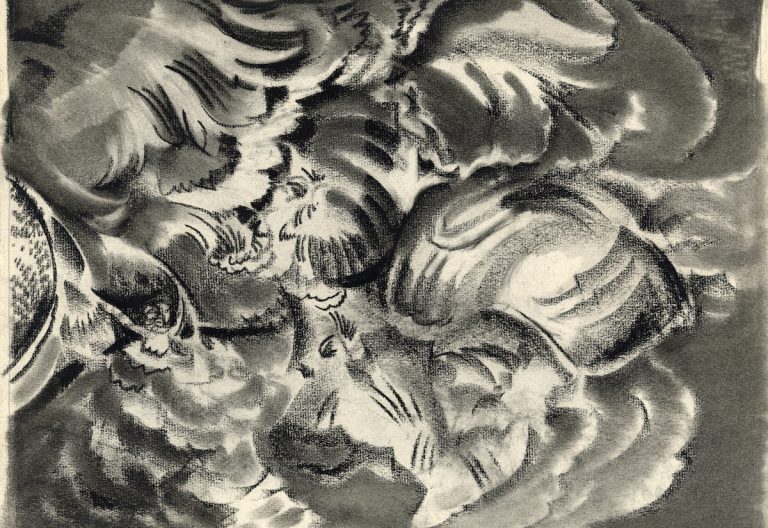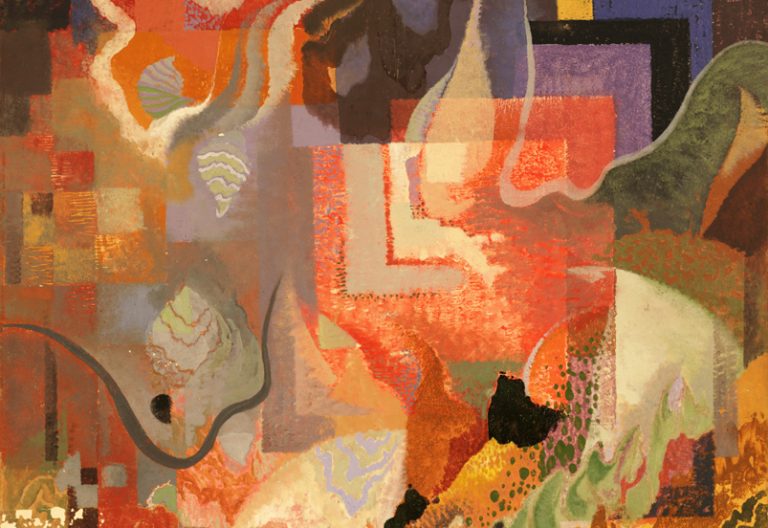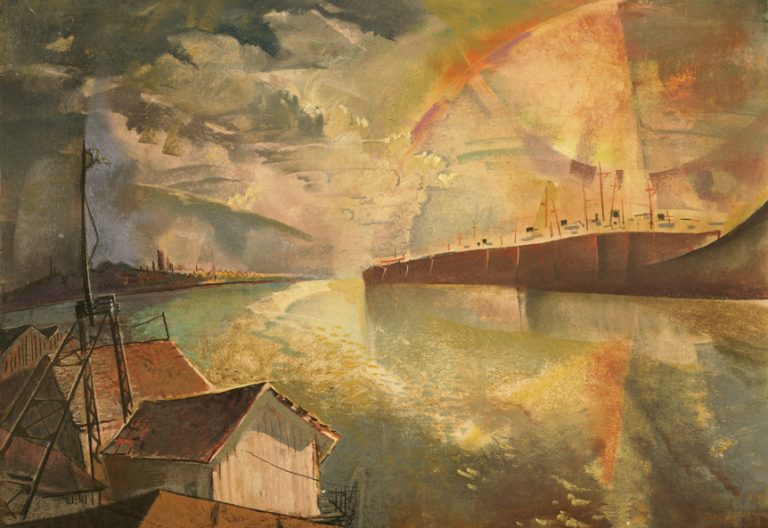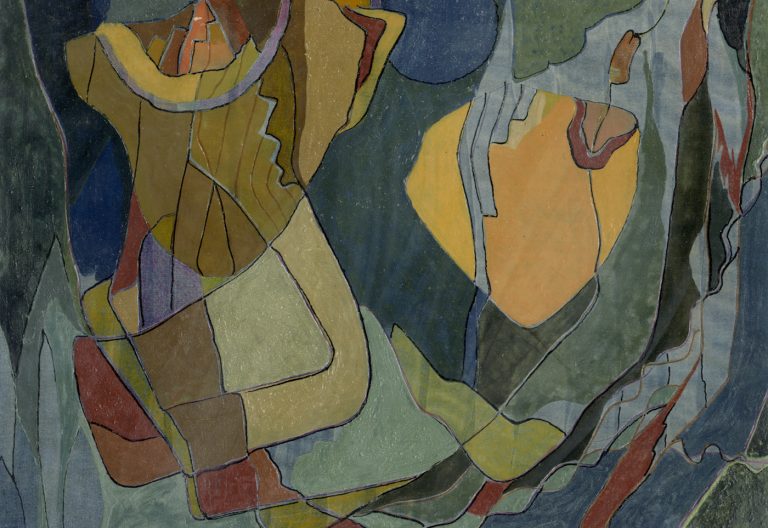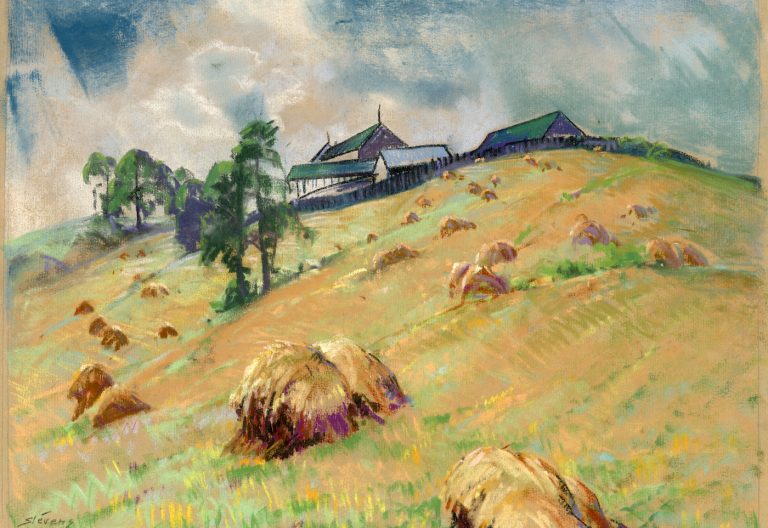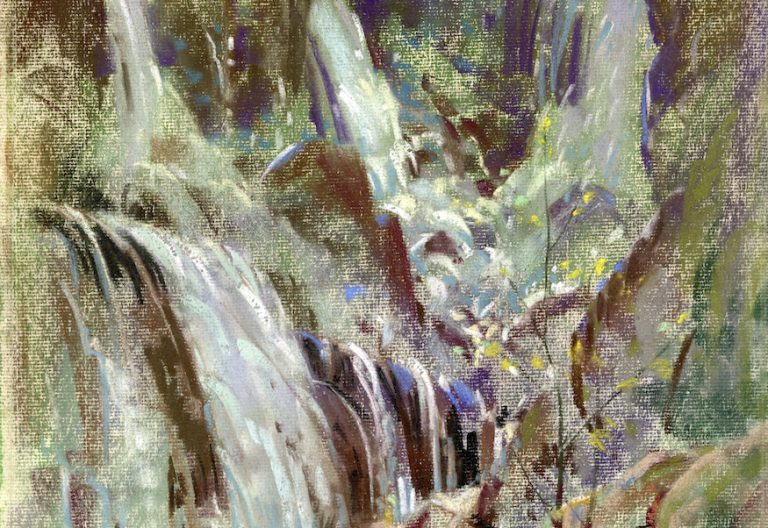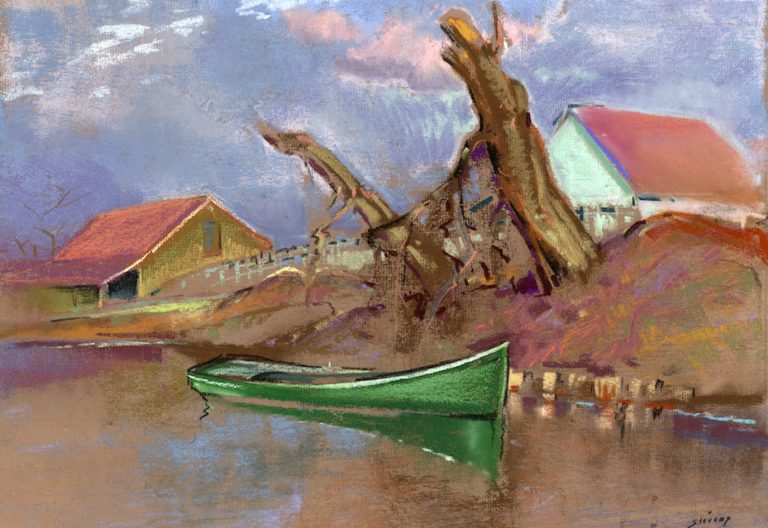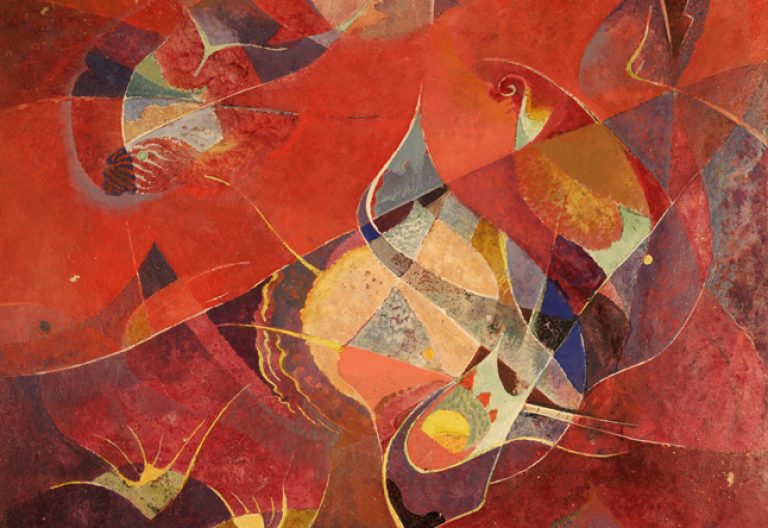Ogden Museum of Southern Art
925 Camp St
New Orleans, LA 70130
504.539.9600 | HOURS
925 Camp St
New Orleans, LA 70130
504.539.9600 | HOURS
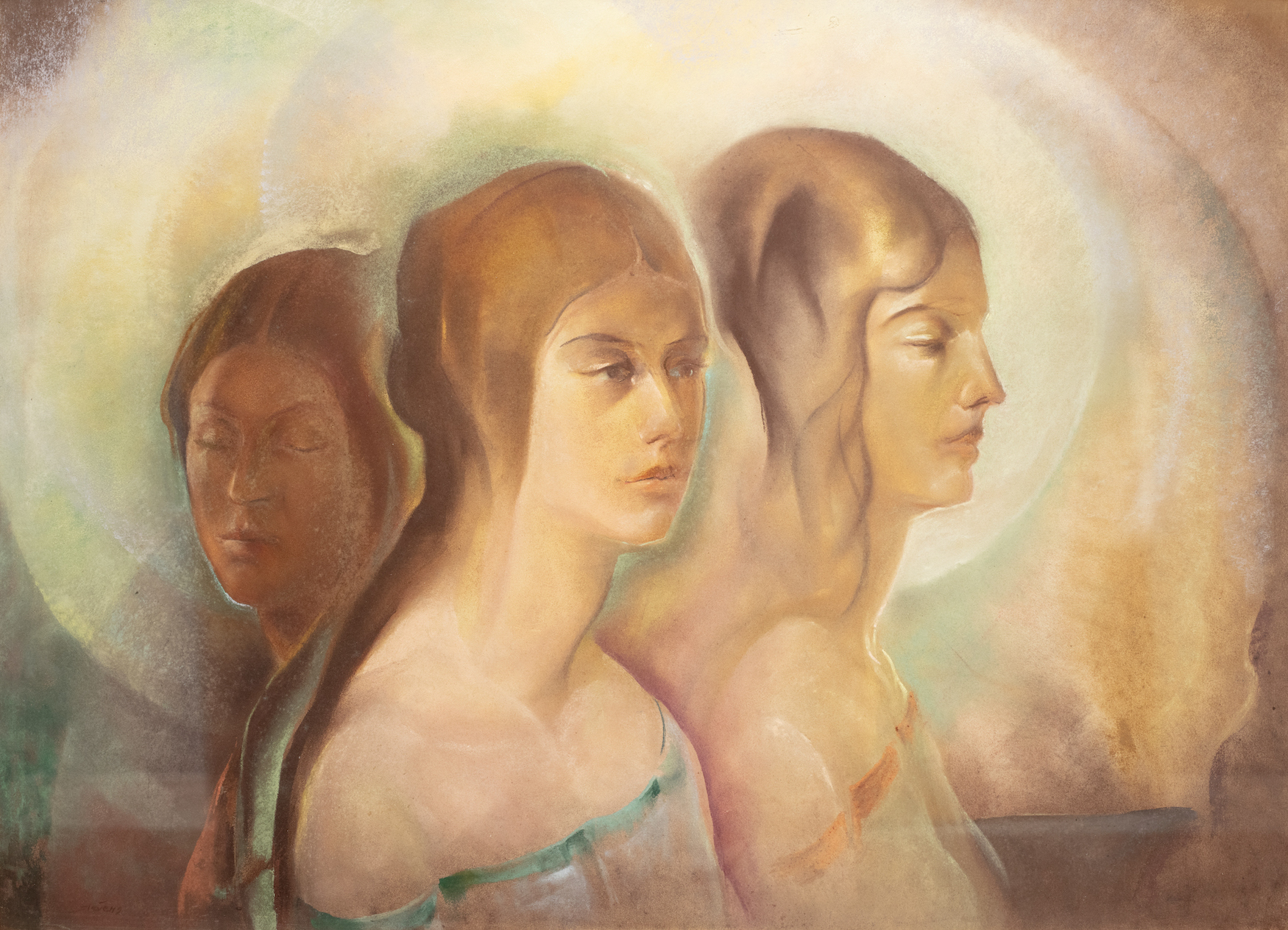
Will Henry Stevens, Untitled (Three Faces), ND, Pastel on paper, 30 x 22 inches, Gift of Janet Stevens McDowell, 2001.1.228
Will Henry Stevens was born 1881 in Vevay, Indiana and was inspired by this pastoral setting from an early age. His father was the town’s apothecary, and taught Steven’s the basics of chemistry, which he would use later in life to create his own materials for making art. During his childhood on the banks of the Ohio River, Stevens’ mother encouraged his artistic sensibilities through private lessons, and his grandmother introduced him to the Transcendentalist literature of the American Renaissance. At 20, he enrolled in the Cincinnati Art Academy, where he studied under the ateliers of Frank Duveneck and Lewis Henry Meakin.
After winning a design competition by Rookwood Pottery, he relocated to New York City and was hired to design tile mosaics for the Fulton Street and Wall Street subway stations. From 1906 to 1908, Stevens trained at The Art Students League of New York, where he met Jonas Lie and Van Dearing Perrine, both of whose work deeply influenced his early palette and composition. The New Gallery displayed his first solo-exhibition, Paintings in Pastel by Will Henry Stevens, in 1907. His artwork was accompanied by the following passage from Ralph Waldo Emerson’s essay Nature, “In the woods, is perpetual youth. Within these plantations of God, a decorum and sanctity reign, a perennial festival is dressed, and the guest sees not how he should tire of them in a thousand years. In the woods, we return to reason and faith.” Art critics’ reviews of Paintings in Pastel noted his apparent longing and love for the natural world. In 1912, Will Henry Stevens was introduced to East-Asian paintings within the Freer Collection at the National Museum in Washington, D.C. He became influenced by modernist landscape painting as well as the spiritual qualities of Chinese paintings from the Song dynasty, prompting Stevens to align his personal aesthetic with Eastern philosophies.
In 1920, he accepted an invitation to teach at Newcomb College and remained in New Orleans with his family, painting steadily until the last year of his life, when he returned to Indiana. Exposure to Paul Klee and Wassily Kandinsky, and his continued quest to represent natural order, informed his use of non-objective elements. From the mid-1930s onward, Stevens combined familiar representational motifs with abstract improvisations to interpret his favorite subjects, the coastal landscapes of Louisiana and Mississippi, and the Blue Ridge Mountains of North Carolina.
